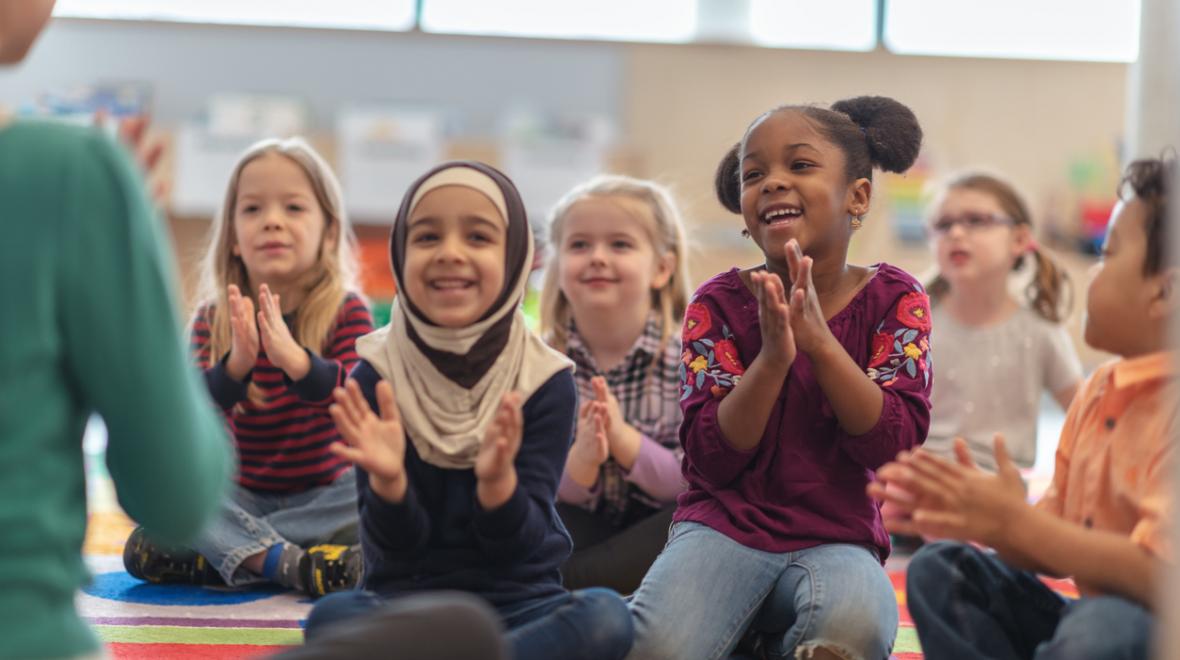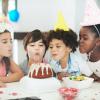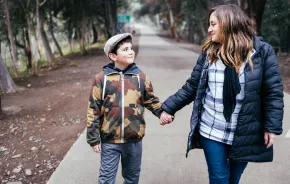
Editor's note: This article was sponsored by the The Bear Creek School.
During the height of the pandemic, reports of the mental health impacts of remote learning and social isolation were almost as scary as the physical risk of contracting COVID-19. Worries about the academic effectiveness of remote learning came hand in hand with concern about potential developmental impacts of an entirely virtual social life. Now that most kids are settling in for their second year back in the classroom, the question still remains: Are our kids scarred for life?
Emily Besaw, a student support specialist at The Bear Creek School in Redmond, says that every child is unique, so they won’t all be affected in the same way. It’s also far too soon to know what the long-term impacts might be on students’ social and emotional development. But so far, early research and Besaw’s own observations indicate that, for the most part, many young kids appear to be adjusting quite well to new school routines. And there’s more good news: For those children who are experiencing pandemic-related social or developmental delays, the most effective supports are the ones parents and teachers often use to promote social-emotional learning during “normal” times.
Social-emotional development
Besaw says the years between kindergarten and middle school involve a lot of social and emotional growth. Students learn to work independently, take chances and, ideally, develop confidence in their own abilities. Children build their social skills, progressing from parallel play to forming friend groups based on shared interests such as soccer or dinosaurs. They move from total self-involvement to physical self-awareness (e.g., if you wave your arms around, you might hit someone) and begin developing empathy and the ability to recognize feelings in others. With that development comes a richer emotional vocabulary and an understanding of more nuanced feelings such as frustration and anxiety.
Child, interrupted?
“The research isn’t there yet to show that remote learning is inherently bad,” says Besaw. In fact, some recent studies, spanning from 2019 through the pandemic, indicate remote learning can promote feelings of being valued among students. Remote learning can also eliminate some socioeconomic pressures (on Zoom, no one knows if you’re wearing brand-name sneakers). But it does have some drawbacks.
“One big loss with remote learning is the ability to have regular interactions in a complex community,” notes Besaw. Online learning tends to focus on teacher-student interactions, with limited interactions among peers, and none of the variety of other people students see during a typical in-person school day. “They’re not engaging in new communities. They’re not necessarily engaging with people of different religions, or different ethnic and racial backgrounds, which is a big component of developing those social interaction skills and empathy,” says Besaw.
In many remote learning contexts, students still have a wealth of interactions outside the classroom — for example, through sports or community activities. But when remote learning is paired with social isolation, there is a greater risk of students missing out on experiences that support social development.
Delayed ‘firsts’
The most obvious examples are all the “firsts” that got delayed. Last year, lots of first-graders experienced things such as circle time and standing in line for the first time. Even older students may have forgotten some of these things after nearly two years at home.
“Some kids fell right back into the groove,” says Besaw. But others started their second year back in person with a little more anxiety and a little less confidence than usual. Many parents may have found their second-grader showing some kindergarten-like separation anxiety on the first day of school or getting overwhelmed by ordinary challenges.
Teachers have had to be more intentional about establishing classroom routines and expectations to overcome this. Limited experiences can play out in more subtle ways, too.
“Students haven’t had as much exposure to diversity and practicing social skills like empathy and self-awareness,” says Besaw. “The emphasis last year that we continue to emphasize this year is helping these elementary-age kiddos identify their feelings and then try to begin regulating them.”
Parents can help by doing the same thing at home. Frequent communication and check-ins with your child and with their teacher are also more important than ever.
Mental health
Limited life experience is kind of a self-correcting problem — kids will catch up as they gain more experience. But mental health impacts relating to changes in routines, social isolation and the pandemic may require more support and attention.
“Kids are like sponges taking in the world around them. But they’re not ready developmentally to process or contextualize all of it,” says Besaw. “The disruption of ‘normal’ has caused some kids to feel more out of control.”
For many young people, feelings of anxiety are contextual and will evaporate as soon as the situation changes. But others, especially perfectionists and those who may be naturally inclined to feel anxious, can get stuck. And long-term stress does take a toll.
“I don’t know if we will ever go back to ‘normal,’ pre-pandemic. We have to help children accept a new normal, accept the change,” says Besaw. Routines are healthy, but adults and children alike need to understand that “normal” is not a static state. Being strongly attached to the way things were at any fixed point in time will make inevitable changes harder to cope with.
“Provide a lot of love for them so that your child knows they can come to you with their questions and big emotions,” says Besaw. Set consistent, appropriate boundaries so they have an idea of what to anticipate from you. Remain neutral and warm in your responses to them, too, so there’s minimal judgement towards the child’s thoughts and feelings. Consistent and appropriate boundaries make children feel safe; whatever chaos there is outside, they know what your family’s standards and values are.
Many children experienced much more serious pandemic stressors than remote learning. Some lost relatives to COVID-19, had parents who lost their jobs or homes, and experienced food insecurity. Although parents may be hard-pressed to meet a child’s most basic needs, these types of traumas can have deep and long-lasting consequences and shouldn’t be ignored. If stopping to acknowledge feelings feels like a luxury, it might be time to look for help.
Personal touch
Whether a child is impacted by a serious trauma or more everyday anxieties, parents should meet their kids where they are. It’s important to talk openly (but in an age-appropriate manner) with your child. Ask them questions and really listen to their answers. Share your own feelings, too.
“Talk a lot more about emotions. Normalize and validate your child’s feelings and model emotional regulation skills,” says Besaw. “There is room for social-emotional growth in these conversations. You can’t always control your circumstances, but you can effectively manage your responses to your feelings. That’s emotional regulation.”
Therapy is a valid choice when children are struggling with those big emotions, and if parents are unsure about how to support their child, Besaw recommends trusting your own insight into your child. If their behavior or moods seem unusual for them, check in with your child’s pediatrician, teacher or the school counselor to assess what appropriate next steps to take to better support the child.
Social-emotional learning is based on social engagement and connection with others. “During the pandemic, we came together and helped each other in very interesting and creative ways,” says Besaw. Whether or not your child is struggling with emotional stressors from the pandemic, finding ways for them to help others — for example, by volunteering as a family — is a great way to give your child’s social-emotional learning a boost.
|
Sponsored by: |

|











